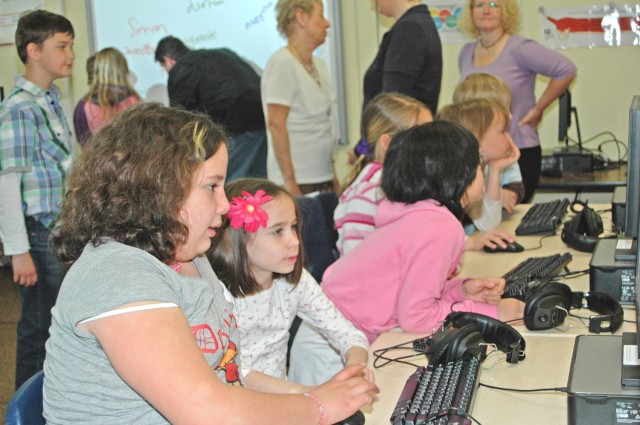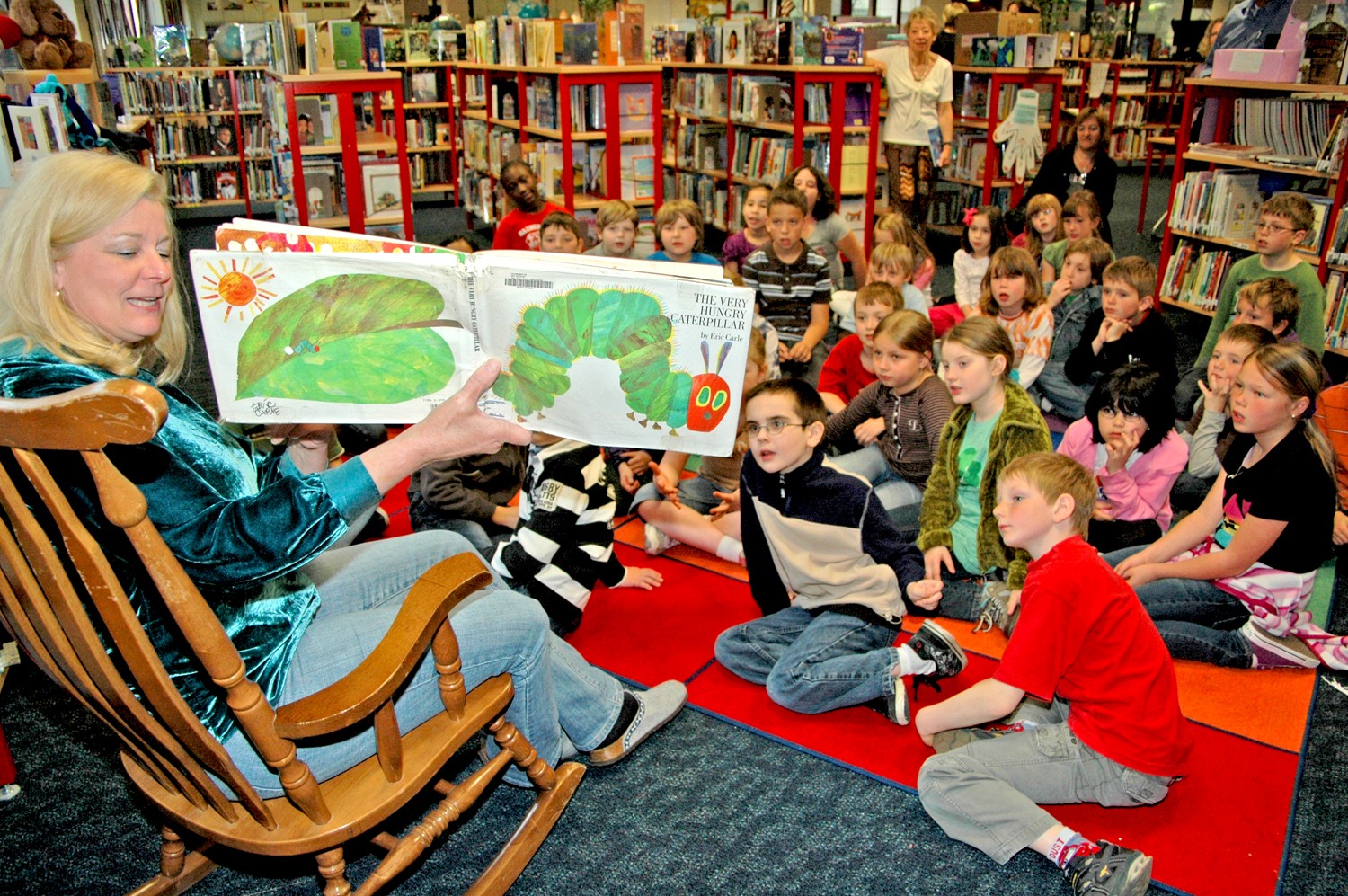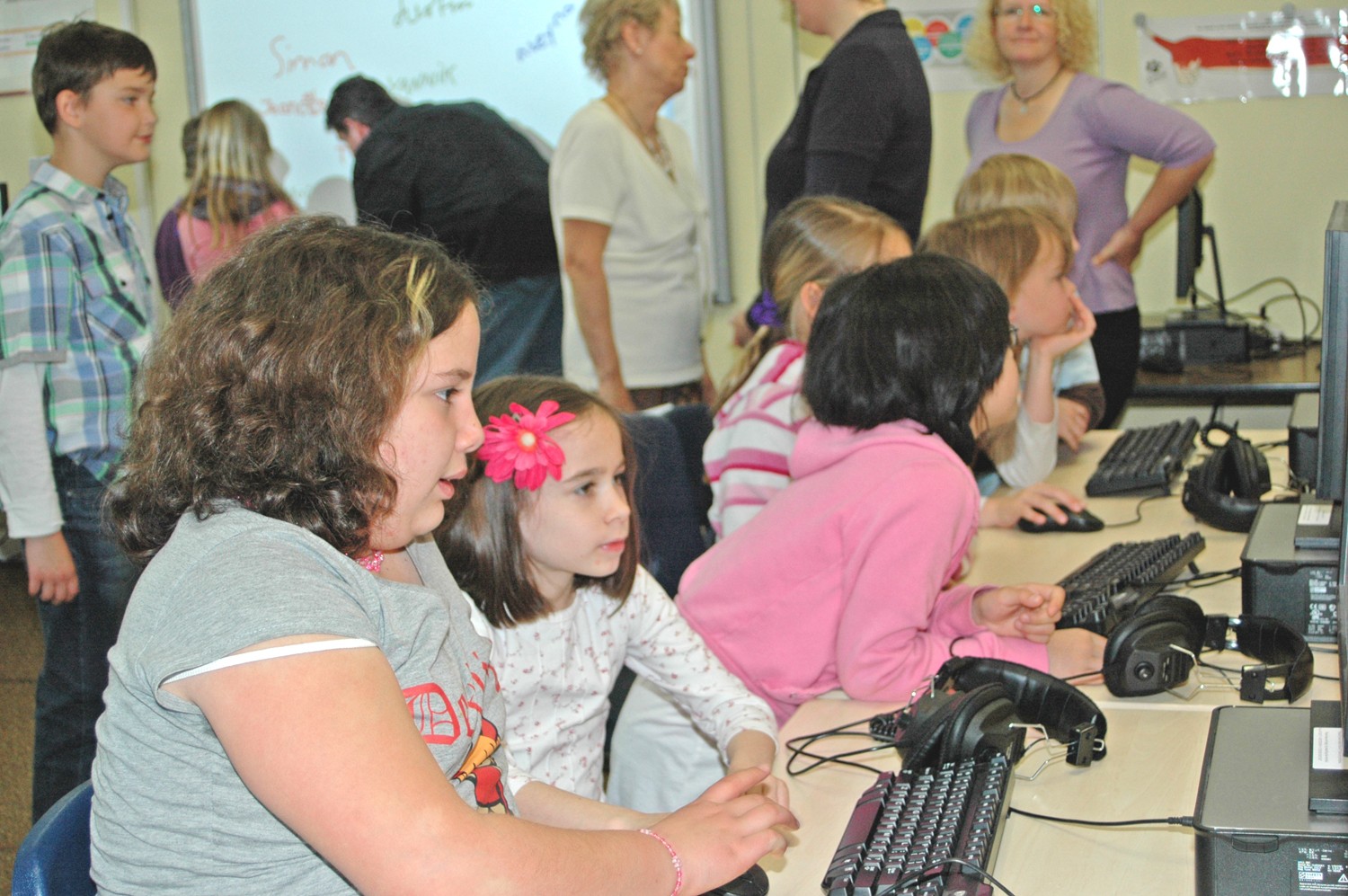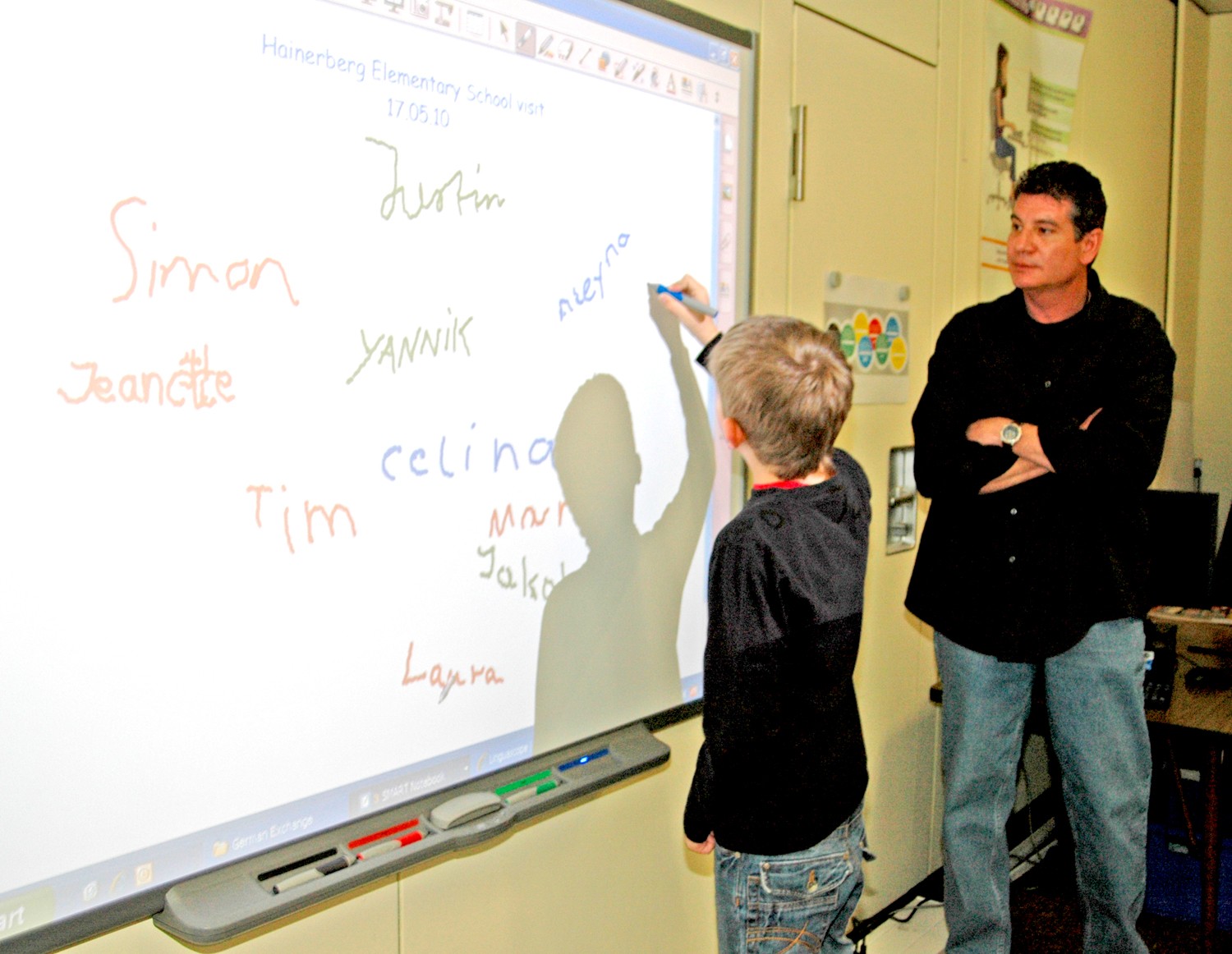WIESBADEN, Germany - The 100-year-old oak door leading into the Trebur German elementary school was impressive, especially to the Hainerberg Elementary second-graders who visited in March.
The door had history, it had weight, and more importantly it was old.
But for the Trebur third-graders who traipsed the hallways of Hainerberg Elementary School May 18, the American school had something equally impressive.
"Der Flur," said Nicola Grableu in answer to her English teacher Silvia Heinrichs.
Heinrichs gave a questioning look but translated her response.
"She likes the building's halls, the floors, the walls," said Heinrichs.
Then it was clear.
In every hallway at Hainerberg Elementary, are displays of art projects and student achievements. In every classroom, the walls are lined with colorful posters and teaching material.
And technology is around every corner with the school's 53 Smart Boards (interactive whiteboards projected and connected to computers for easy printing), 59 projectors and some 300 new computers.
"You have a lot of modern technology," Heinrichs said as she crouched by one of her German students in the Hainerberg Elementary's computer lab.
The May 17 German-American exchange day included time in the school's computer lab working on German-English computer games, a reading session in the library, time on the school's playground and a real American school lunch.
"It should be an eye-opener for all the students," said Regina Majer, the Hainerberg Elementary German-American teacher for kindergarten through second grade, "an exchange with a different culture not just a different language. And it's also about understanding the different culture whether it's the food or the schools."
After more than 30 years as a German-American teacher, Majer said younger students are less inhibited to learn a language or reach out to other students and make a connection.
"I always tell our students 'you are little ambassadors of our country' before we visit the German schools," said Majer.
During a visit in March to Trebur, American second-graders were treated to a tour of the city, a stop at a museum and a lunch of fresh potato soup, carrot sticks and fresh bread.
The day of thousand-year-old history and homemade meals was a stark comparison to the American experience of a big playground and an American lunch consisting of tacos or pizza.
"It's a good experience for the pupils, and they are very impressed with the building," said Heinrichs, who along with the Trebur third-grade teacher Irene Bonk, accompanied 19 German students to Hainerberg.
In the computer lab, Hainerberg Elementary's educational technologist, Scott Barlow, helped Trebur students with their first experience using a Smart Board. Hesitant marks were quickly erased as the children scrawled their names across the virtual board.
With technology offered in just about every classroom and enough computers to be shared among both German and American students, Barlow said the availability of technology definitely catches the German students' attention.
"We're looking pretty cool," said Barlow.






Social Sharing